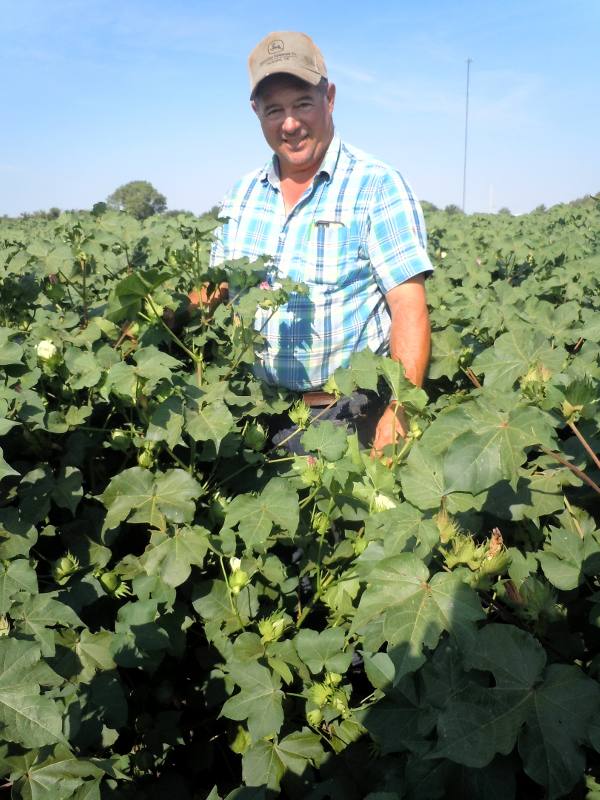September 5, 2013

Can a cotton farmer have too much rain during a drought? Well it can cause some problems but Gene Overton, who farms near this Grady County community, says it’s a good problem to have.
"We received more than 30 inches of rain here since this spring," Overton said, standing in a field of dryland cotton as tall as he is.
"We were two weeks late getting it planted due to rain and a cool spring. It kept on raining throughout the summer and kept us from applying any growth regulators to slow down the growth."
If you are enjoying reading this article, please check out Southwest Farm Press Daily and receive the latest news right to your inbox.
Historically, frost has controlled growth in U.S. commercial cotton. A good frost will kill the plant about the time cotton bolls have matured.
Overton says he will have to put a growth regulator on his tall cotton crop. Also, the heavy structural growth of the plants may force him to use a cotton picker rather than the usual cotton stripper.
Due to drought conditions, a weak market and other concerns, Overton, like other cotton farmers, didn't plant as much cotton this year. He expects to harvest 400 acres.
"I planted varieties from PhytoGen, FiberMax and AllTex," he said. "I'm hoping the crop will average three-quarters of a bale per acre. It might do better. While the plants are loaded with bolls, they are so big and covered with leaves, it is hard to estimate what the final yield will be."
Other Oklahoma cotton growers, except for those in the extreme southwestern portion of the state where the drought is still severe, say if they had known there would be sufficient rain, they would have planted more cotton.
Overton also serves as the manager of the Bi-State Cotton Producers Cooperative gin here. His father, Bill, built the original cotton gin at Minco. He has been the gin manager for 13 years.
The cooperative's members planted approximately 5,000 acres of dryland cotton along with 1,500 acres of irrigated cotton, some of which has potential to yield two to three bales per acre, he said.
"We usually receive cotton to process from farmers in the Union City and Pauls Valley areas," he said. "Cotton is also transported here from the Blackwell, Okla., area, near the Kansas border."
This has been a busy year of construction at the Minco facility. They installed equipment from another cotton gin at Blackwell. The next step will be to build a building around the newly-installed equipment.
"We will be ready for harvest," he said. "I know everything will be in place and ready to roll later in October."
Also of interest on Southwest Farm Press:
Timely rains help Okla. cotton
Oklahoma Panhandle irrigators cut Ogallala Aquifer water use in half
You May Also Like




